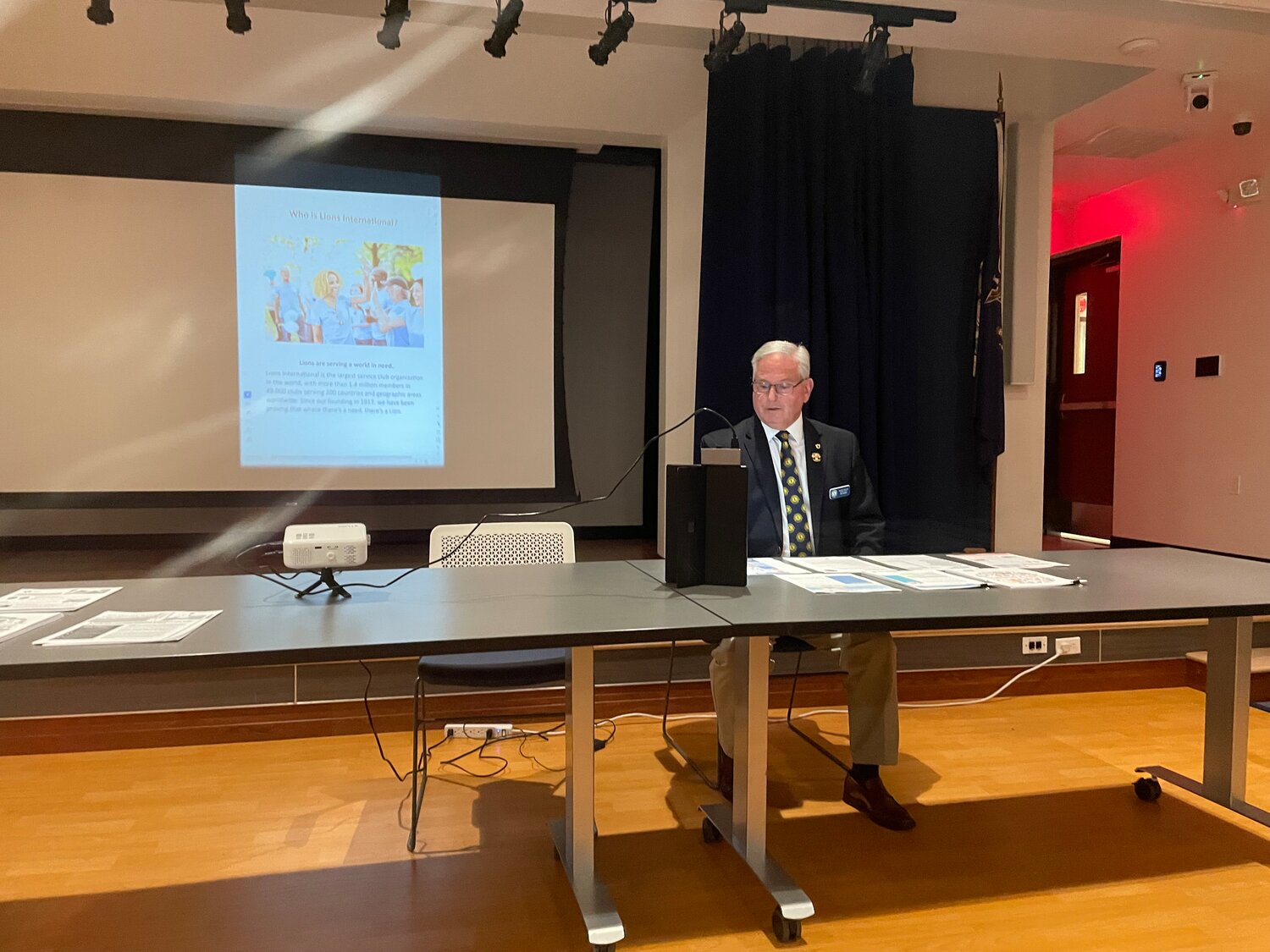Lions Club hosts forum on diabetes
A small crowd gathered in the community room of the Levittown Public Library on Nov. 29 to learn about a growing health issue.
The Levittown Lions Club, which is well known for its focus on eye health, gave a presentation on prediabetes and type 2 diabetes. Vision loss is one of the dangers of diabetes.
Levittown Lions President Frank Marcinek spoke about the club’s service to the community. The Lions collect used eyeglasses in donation boxes around town and ship them overseas to countries where many people can’t afford them. They also bring a special camera to district preschools where, within a matter of seconds, a range of eye issues can be detected just by having a child look into the camera. Parents can then take the child to an eye doctor for further evaluation.
Jim Hayden, Seaford Lions member and chairman of the Lions Diabetes Foundation for Nassau County and Bermuda, which partners with the Association of Diabetes Care and Education Specialists, detailed the telltale signs of diabetes, the risk factors for the disease, and some suggestions for general health improvement. The ADCES works with the Lions to certify members to be community care coordinators. The partnership started about six months ago, and the plan is to do more of these educational presentations throughout the community.
According to Hayden, over 100 million people in the United States have prediabetes, in which blood sugar is elevated but not yet at the point of a diabetes diagnosis, and over 38 million have the disease. Although being older than 45 is a risk factor, those under 18 are becoming diagnosed with prediabetes and type 2 diabetes at increasing rates.
Other risk factors include being overweight, being physically inactive, having had gestational diabetes during pregnancy, and family history. And members of certain ethnic groups have a higher risk of developing the disorder.
Many people with prediabetes, and even type 2 diabetes, are unaware that they have it, Hayden explained, so knowing the signs is important. Some of those are frequent urination, trouble concentrating, slow healing of cuts and wounds, constant fatigue or tiredness, constant thirst, and dry and itchy skin. If diabetes isn’t managed it can lead to kidney disease, organ damage, loss of vision and heart disease.
Marcinek, who had had a family member with diabetes, understands how serious it is. “A lot of people die from diabetes,” he said. “It’s a very insidious disease.”
In the past, diabetics needed to prick their fingers to get a small blood sample to test their blood sugar. Newer technology allows for a wearable device that can constantly evaluate blood sugar levels, and can be monitored with a smartphone app. Real-time monitoring is hugely beneficial in helping diabetics keep their blood sugar at a healthy level.
Jean Allegretti, who attended the presentation, shared her story of being diagnosed with diabetes.
“If it wasn’t for my eye doctor, I never would have known that I was a diabetic,” she said.
Allegretti had always gotten yearly checkups and blood tests, but she hadn’t had an eye exam in a few years. When she realizing that her eyeglass prescription didn’t work for her anymore, she went to her eye doctor, who recognized that she was diabetic and told her to go to the emergency room, where she was given a confirming diagnosis and a shot of insulin. She is now managing the disease well with medication.
In general, if you’re diagnosed with diabetes, it’s important to take medication as prescribed, monitor your glucose levels, and understand that medication and diet may need to be adjusted periodically because the disease can change over time. Staying active, limiting alcohol consumption, quitting smoking, and maintaining a healthy diet are important factors in steering clear of the disease.









